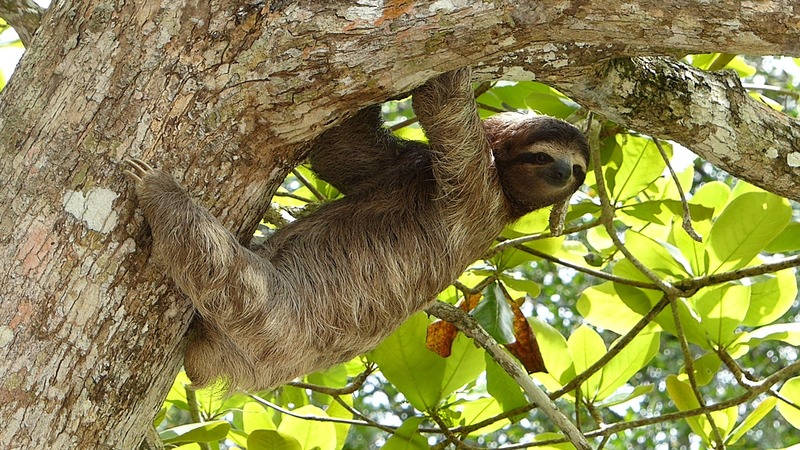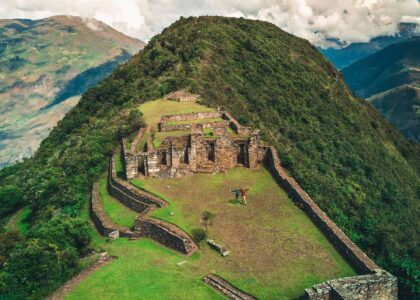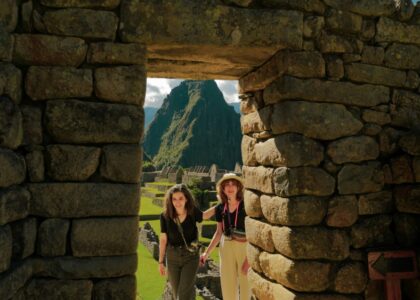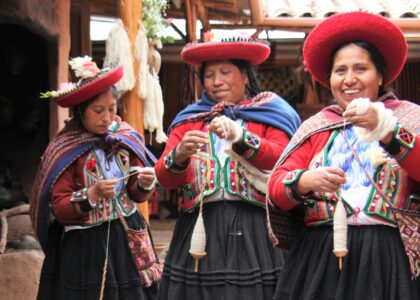Sloths are one of the animal kingdom’s most charming and intriguing creatures, famous for their leisurely pace and preference for living life in the slow lane—quite literally hanging upside down from trees most of their lives. These gentle animals have captured hearts worldwide, not just for their adorable faces but also for their unique lifestyle, which seems to defy the hustle and bustle of the natural world. Peru, a country with a rich biodiversity, is home to these slow-moving marvels. Within Peru’s lush rainforests are diverse ecosystems where sloths thrive, making it an ideal spot for wildlife enthusiasts to catch a glimpse of sloths in their natural habitat.
Contrary to the common belief that sloths are lazy, their slow movements are an amazing adaptation for energy conservation. Sloths have a very low metabolic rate, meaning they don’t burn many calories. To survive on their nutrient-poor diet of leaves, which provides very little energy, sloths minimize their energy use by moving slowly and deliberately. This strategy is perfect for their survival in the wild, allowing them to thrive in the dense rainforests of places like Peru. So, when you see a sloth moving at its famously leisurely pace, remember it’s not laziness—it’s energy efficiency at its finest.
Sloths are nature’s stealth experts, thanks to their unique fur, which acts as a perfect camouflage. Their thick, coarse fur isn’t just for show; it provides an ideal environment for algae to grow. This green algae blends seamlessly with the lush treetops of the rainforest, making sloths virtually invisible to predators from below. This unique relationship benefits both parties: the algae get a place to live and sunlight for photosynthesis, while sloths get an effective disguise. This natural stealth mode is crucial for their survival, allowing them to remain hidden in plain sight among the branches of Peru’s dense forests.
Sloths hold the title of the world’s slowest mammal, a fact that adds to their unique charm. On the ground, they move at a leisurely pace of about 2 meters per minute. This slow movement is not just a quirky trait; it’s an adaptation that helps them conserve energy and remain undetected by predators. Their slow pace is also due to their muscular composition, which is geared more towards strength (to hang from tree branches for long periods) than speed. This distinctive speed—or lack of it!—makes them fascinating creatures and a must-see for visitors to Peru, where sloths blend into the tranquil pace of the rainforest.
Despite their slow reputation on land, sloths are surprisingly skilled swimmers. This ability is crucial in the rainforest, where rivers and streams are common obstacles. Sloths use a streamlined form of swimming, easily moving through the water. This not only helps them navigate their environment but also aids in escaping predators and finding new feeding grounds.
Sloths’ diets are as laid-back as their lifestyle. They primarily eat leaves, which, while abundant, provide very little energy and nutrients. This low-energy diet is the reason behind their slow metabolism and movements. Leaves are hard to digest, and sloths have specialized stomachs with multiple compartments to break them down over time, a process that can take a month for a single meal. This dietary strategy aligns perfectly with their energy-efficient lifestyle, allowing them to thrive in the treetops of Peru’s forests with minimal effort.
The sloth’s digestive system is as unique as its leisurely lifestyle. With a metabolism that moves at a glacial pace, a sloth can take up to a month to fully digest a single meal. This slow digestion process is crucial for extracting every possible nutrient from their low-energy leafy diet. Their specialized stomachs, designed to break down tough plant matter, reflect their adaptation to a life spent mostly motionless among the treetops. This extraordinary digestive efficiency is a key factor in the sloth’s ability to survive on a diet that would leave other animals malnourished.
Sloths are the epitome of living the high life—literally. These creatures spend almost their entire existence in the canopy of rainforests, coming down to the ground only about once a week for bathroom breaks. This lifestyle is not just a preference but a survival strategy. Being high up in the trees protects them from predators and allows them to feed on leaves that few other animals can reach.
Sloths come equipped with their own natural “umbrella.” Their fur is thick and grooved, a unique feature that allows rainwater to flow off quickly, keeping them dry during the frequent rainstorms of their rainforest homes. This adaptation is vital for their survival, as staying wet could lower their body temperature too much, given their slow metabolism. The design of their fur proves the sloths’ are perfectly adapted to the rainy environments of places like Peru, ensuring they stay warm and dry despite the damp conditions.
The fur of a sloth is more than just a coat; it’s a bustling ecosystem. Sloths’ coarse and grooved fur creates a perfect environment for various organisms, including moths, beetles, and algae. These guests live symbiotically with the sloth, with algae providing camouflage and moths helping to fertilize the algae with their waste. This mini-ecosystem on the back of a sloth illustrates the complexity of rainforest life and how interconnected species are.
The sloths we see today hanging leisurely from trees have colossal ancestors. Ancient sloths, which roamed the earth thousands of years ago, were as large as elephants. These prehistoric creatures, known as Megatherium, stood up to 20 feet tall when on their hind legs and roamed much of South America, including what is now Peru. Unlike their tree-dwelling descendants, these giant sloths were ground-dwelling. The transition from these giants to the small sloths of today is a fascinating evolution story, showing the diverse forms life can take and adapt over millions of years.
Peru offers wildlife enthusiasts the unique opportunity to observe some of the world’s most fascinating creatures in their natural settings. Among these are the adorable and elusive sloths, known for their slow pace of life and incredible adaptation to the rainforest environment. Explorify offers specially curated tours in the lush landscapes of Peru, where you have the chance to witness these gentle creatures up close, hanging from the trees and going about their leisurely lives.
Our tours are designed to immerse you in the rich natural and cultural heritage of Peru, taking you on a journey through its dense forests, ancient ruins, and vibrant communities. With Explorify, you’re not just observing; you’re becoming part of a deeper understanding and appreciation for the natural world and its inhabitants.
Are you ready to fall in love with sloths and explore the wonders of Peru? Book your adventure with Explorify today and get ready for an unforgettable journey into the heart of nature’s marvels. Discover the magic of Peru’s wildlife, landscapes, and cultures firsthand. Your journey into the enchanting world of sloths and the rich biodiversity of Peru awaits!






